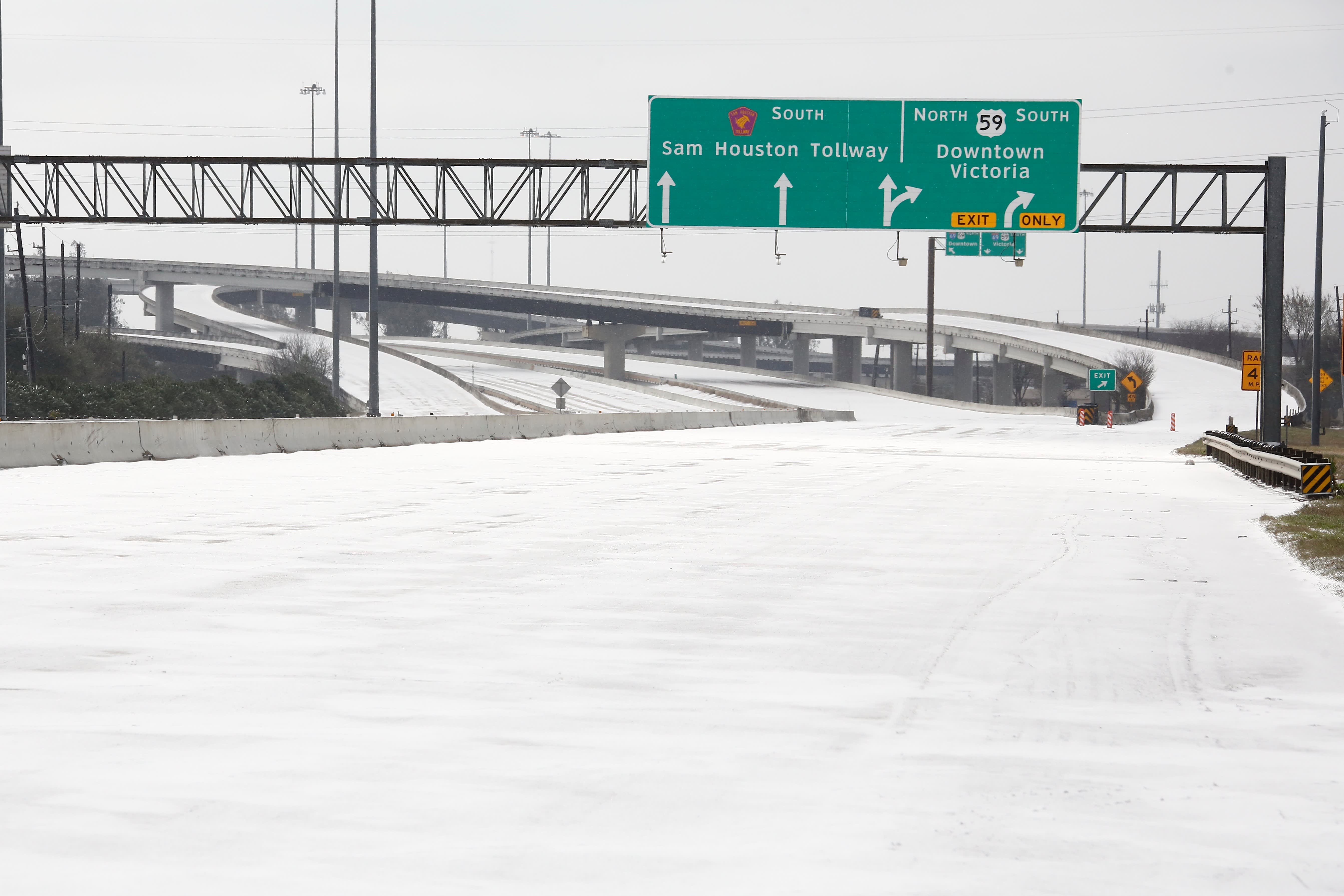A highway is closed due to snow and ice in Houston, Texas, on Feb. 15, 2021.
Chengyue Lao | Xinhua News Agency | Getty Images
The Texas winter storm is expected to push gasoline prices up across the U.S. by about 10 cents per gallon within the next couple of days.
That follows a five-cent per gallon jump in unleaded gasoline in the last week that drove the national average to $2.51 per gallon, about seven cents higher than a year ago, according to AAA.
Power outages and freezing weather in the south have wreaked havoc on the oil and gas production centers in Texas. Refineries have also been cutting back on production and are shutting down due to the lack of power and to preserve electricity for the public.
There were more than four million people without power in Texas as of Tuesday afternoon, according to NBC News.
“What we have is an electric generating problem,” said Andy Lipow, president of Lipow Oil Associates. “You don’t have natural gas, and you don’t have electricity. It’s difficult for refiners to turn crude into gasoline.”
He said a number of refineries shut down due to the lack of natural gas and the electricity shortfall, including Motiva in Port Arthur, Texas, the largest refinery in the U.S.
“This is temporary until the weather warms up,” Lipow said. RBOB gasoline futures — that is, reformulated blendstock for oxygenated blending — were up 3.5% at $1.75 per gallon.
The rise in gasoline prices has been the biggest contributor to consumer inflation.
In the January consumer price index, the gasoline index rose 7.4% while overall prices rose just 0.3%. Gasoline prices have been rising with the cost of oil, which is up 23% since the beginning of the year.
Tom Kloza, global head of energy analysis at Oil Price Information Service, expects that about four million barrels of refining capacity are offline in Texas and other states.
Total U.S. capacity is about 18 million barrels, and the industry was operating at about 80% capacity prior to the storms, he said.
“I believe they’ve had orderly shutdowns. They haven’t had any damage or anything knocked out,” said Kloza. “My guess is this is like a blip in the system, but it’s not a big deal.”
He expects the high price of the year to be about $2.80 per gallon, ahead of the summer driving season.
Kloza said demand is down about 15% from last year, but by late March, demand this year will be much higher. During last year’s pandemic shutdowns, demand dropped sharply starting in the week of March 27.
Kloza said there is plenty of gasoline supply, so the shutdowns should not have a long term impact. “We could flirt with $2.60,” he said. “We spent four years above $3.50. This is not going to be a major shock to the system.”
The jump in gasoline prices could be greater if oil begins to move higher.
“Every dollar increase in crude translates to about 2.3 cents increase in the cost of gasoline,” Kloza said. “This is not the next stop on the road to $3. This is the next stop on the road to $2.65 to $2.70.”
West Texas Intermediate oil futures were up just 0.3% to $59.66 per barrel, after earlier trading above $60.
“You have the problem of the refineries being down, so demand is not there,” said John Kilduff, partner with Again Capital. That capped gains in gasoline. “We’re up about $3 from last week.”
